Should You Wear Wrist Straps for Deadlifting?

Imagine you’re performing a deadlift. As you increase the weight, you notice that your grip is starting to give out. This is an appropriate time to use wrist straps to continue lifting heavy weights while maintaining proper technique.
Wrist straps are a useful accessory for deadlifting. Several scientific studies suggest a direct correlation between grip strength and overall lifting performance [1].
When to Use Wrist Straps for Deadlifting:
Heavy Weights:
Wrist straps can be beneficial when lifting heavy loads during deadlifts. They provide additional support to your grip, allowing you to focus more on the muscles being worked rather than worrying about your grip strength.
Suggested Read: Romanian Deadlift: How to, Benefits, Tips, and Variations
Preventing Grip Fatigue:
If your grip tends to fatigue before your target muscles during deadlifts, wrist straps can help extend your set and ensure that your back and leg muscles receive adequate stimulation.
Targeting Specific Muscles:
Straps can be useful if your goal is to specifically target and isolate certain muscle groups during deadlifts. By minimizing grip limitations, you can place more emphasis on the posterior chain, such as the hamstrings and glutes.
When Not to Use Wrist Straps:
Building Grip Strength:
If improving grip strength is one of your goals, it’s advisable not to use wrist straps too frequently. Regular deadlifting without straps can enhance your grip strength over time.
Suggested Read: 12 Pulling Exercises for Whole Body Strength Training
Skill Development:
Wrist straps may hinder the development of proper lifting technique and form, especially for beginners. It’s crucial to master the fundamental deadlift form before relying on straps.
Lighter Loads:
For lighter deadlift sessions or warm-up sets, using wrist straps may not be necessary. Save them for the heavier lifts were grip becomes a limiting factor.
Wrist Straps Improve Grip Strength: Scientific Report
A cross-sectional examination by Harris et al. [2], indicates that wrist straps are beneficial in powerlifting, especially during the bench press.
Biomechanical analyses propose that wrist straps contribute to stronger grips during exercises like deadlifts, rows, and chin-ups. Improved grip strength is integral to overall strength, especially in exercises involving heavy loads.
Wrist straps decrease injury risks by increasing stability. However, it’s crucial to strike a balance, as overreliance without concurrent wrist strength training may have drawbacks.
Scientific research suggests that wearing wrist straps does not impede grip strength or resistance [3]. It means that you can lift heavier weights with the same power but more confidence.
Better Load Management:
Grip strength determines how much weight you can effectively lift and control. As deadlift weights increase, the demand on your grip intensifies. A strong grip enables you to handle heavier loads, contributing to greater overall strength gains.
Muscle Activation:
The muscles involved in grip strength, such as the forearm flexors, play a significant role in the deadlift. When you have a powerful grip, these muscles contribute to the stability of the lift, allowing you to recruit and activate the larger muscle groups involved in the deadlift, including the hamstrings, glutes, and lower back.
Preventing Bar Slippage:
A secure grip prevents the barbell from slipping out of your hands, ensuring a smooth and controlled lift. If grip strength is compromised, it can lead to premature fatigue, decreased performance, and an increased risk of injury.
Wrist Straps Protect Your Wrist Anatomy
Wrist straps primarily protect the tendons and ligaments around the wrist joint during deadlifting, offering additional support and stability.
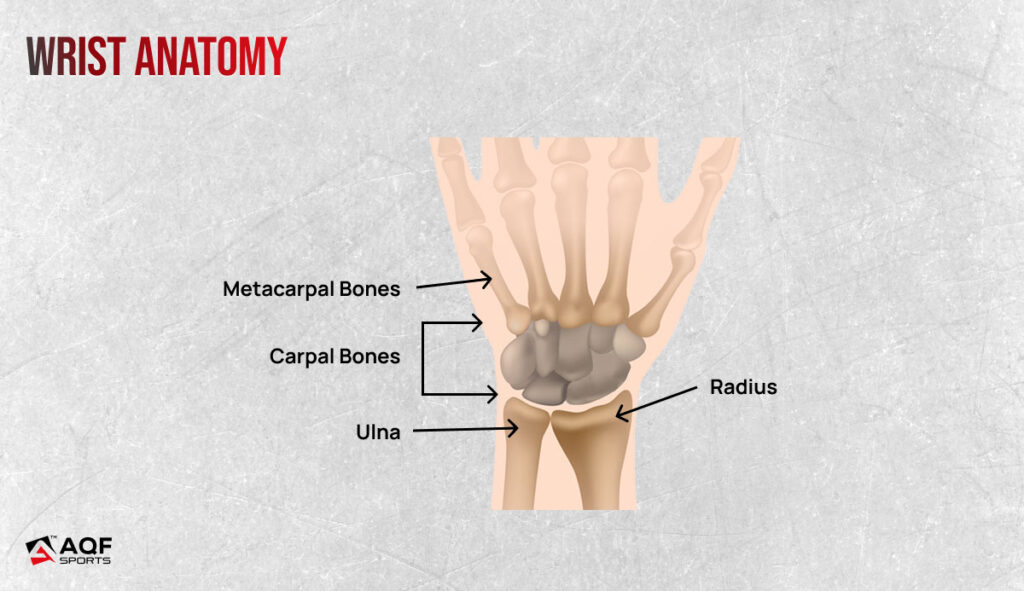
Wrist Extensors and Flexors:
Wrist straps provide support to both the extensor (top of the wrist) and flexor (underside of the wrist) tendons, reducing the strain on these structures during heavy lifts.
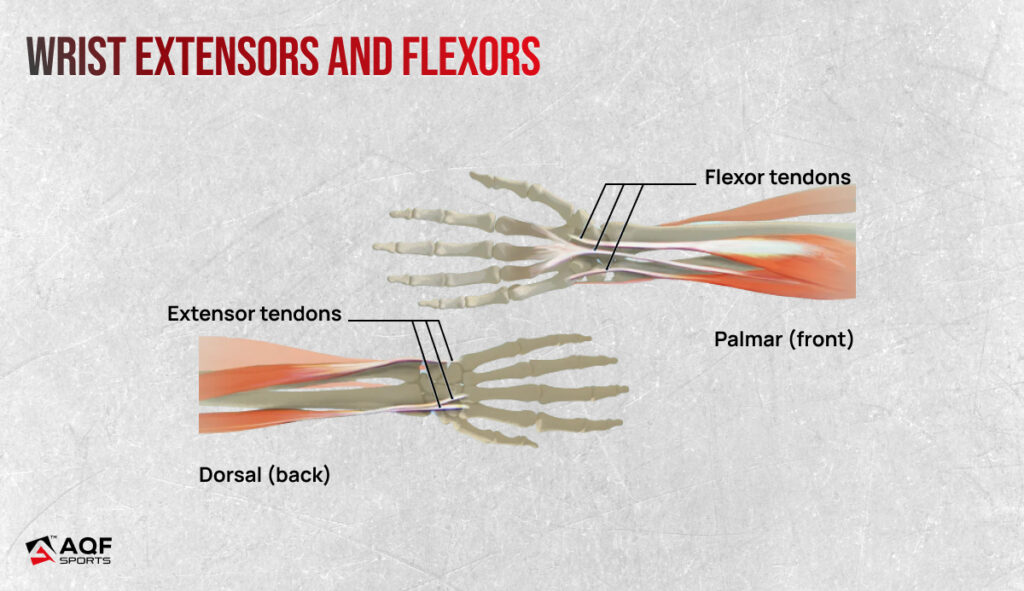
Minimizing Ligament Stress:
Ligaments connecting the wrist bones benefit from the added support, minimizing stress and potential overstretching during the deadlift.
Wrist Stabilization:
Wrist straps help stabilize the wrist joint by limiting excessive movement. This stabilization is especially valuable during heavy deadlifts, preventing lateral or unwanted flexion of the wrists.
How to Wear Wrist Straps for Deadlifting?
Wearing wrist straps for deadlifts is straightforward, but proper placement and tension are crucial for effective use. Follow these steps for optimal wearing:
Positioning on the Wrist:
Start at the Base: Hold one end of the wrist strap in each hand and place it just below the base of your palm, covering the wrist joint. Align it with the knobby bone on the outside of your wrist.
Wrapping Technique:
Secure Loop: Loop one end of the strap through the other and pull it tight to create a secure loop around the barbell.
Adjustment: Ensure the strap is snug but not overly tight. You should be able to slide a finger between the strap and your skin with a bit of resistance.
Grip Condition:
Natural Grip: Maintain your preferred deadlift grip—whether it’s an overhand, mixed, or hook grip.
Strap Attachment: Secure the strap around the barbell, creating a direct link between your wrist and the bar. This allows the strap to bear a portion of the load during the lift.
Checking the Fit:
Comfort Level: The straps should provide support without causing discomfort or cutting off circulation. If you experience numbness or tingling, adjust the tension.
Stability: After securing the straps, your wrists should feel stable, and the load on the barbell should be evenly distributed.
Range of Motion: Perform a few wrist circles and hand movements to ensure that the straps don’t impede your natural range of motion.
Strap Length and Wrapping:
Proper Length: Ensure that the length of the strap is sufficient for effective wrapping. It should comfortably loop around the bar without excessive slack.
Even Tension: Maintain consistent tension as you wrap the strap around the barbell to prevent uneven loading.
Test with Lighter Weights:
Warm-Up Sets: Lift lighter deadlift warm-up sets to ensure that the straps don’t compromise your grip or alter your lifting mechanics.
Adjustments: If you notice any issues during warm-up sets, such as discomfort or slipping, make necessary adjustments to the strap placement and tension.
Wrist Straps Benefit the Following Types of Grips:
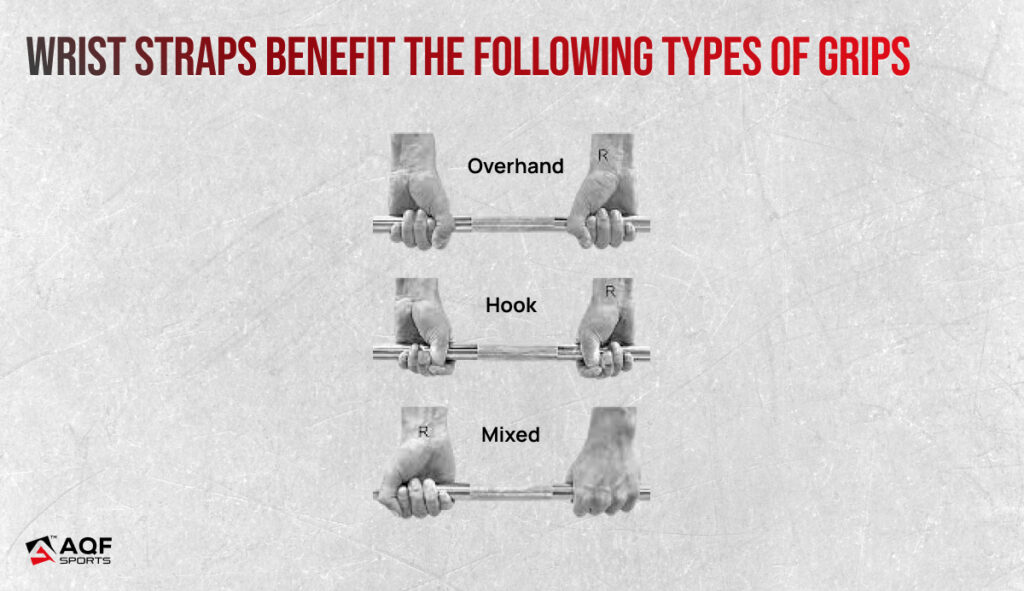
Overhand Grip (Pronated):
Wrist straps are particularly beneficial when using an overhand grip, where your palms face you. This grip can sometimes lead to early grip fatigue, especially during heavy deadlifts.
Mixed Grip:
When using a mixed grip (one hand pronated, one hand supinated), the supinated hand (palm facing away) is generally stronger in terms of grip. Wrist straps can help balance the strength between the two hands, preventing uneven stress on the wrists and forearms.
Hook Grip:
While the hook grip (thumb wrapped inside fingers) is effective for maintaining a strong grip, some lifters find it uncomfortable or even painful. Wrist straps can offer relief and support without sacrificing grip strength.
Wrist Straps May Not be Ideal for Following Grips:
Double Overhand Grip:
When both palms face you, this grip engages the forearm and grip muscles more evenly. Wrist straps may not be as necessary for individuals who can maintain a strong double overhand grip, especially at lighter loads.
Alternating Grip (Switching Hands Each Set):
If you’re comfortable switching your grip between sets, allowing both hands to experience pronation and supination, you may find that grip fatigue is less of an issue. In this case, wrist straps might be less crucial.
Things to Consider When Wearing Wrist Straps for Deadlifting:
Individual Preferences:
Grip strength and comfort with different grips vary among individuals. Some people naturally have stronger grips, while others may struggle more. Assess your own strength and limitations to determine the most suitable approach.
Training Goals:
If building grip strength is a primary goal, it’s essential to incorporate exercises without wrist straps regularly. On the other hand, if you are focusing on overall strength and muscle development, wrist straps can be a valuable tool when grip strength becomes a limiting factor.
Injury or Discomfort:
If you have a pre-existing wrist or hand injury, it’s crucial to consult with a healthcare professional before using wrist straps. In some cases, straps might exacerbate certain conditions, and alternative strategies may need to be considered.
Wrist Wraps vs Wrist Straps: Pros & Cons
Wrist Wraps:
Wrist wraps are typically elongated and made of elastic material.
They are designed to be wrapped around the wrist joint, providing compression and support.
Pros:
Stability: Provide wrist stability during heavy lifts.
Prevention: Help prevent hyperextension of the wrist.
Cons:
Dependency: Over-reliance can hinder natural wrist strength development.
Best Time to Wear Wrist Wraps:
Heavy Lifting Days: Particularly beneficial on days with pressing exercises.
Wrist Straps:
Wrist straps are shorter, thicker, and often made of materials like nylon or leather.
They include a loop for the wrist and a longer portion to wrap around the barbell or other lifting equipment.
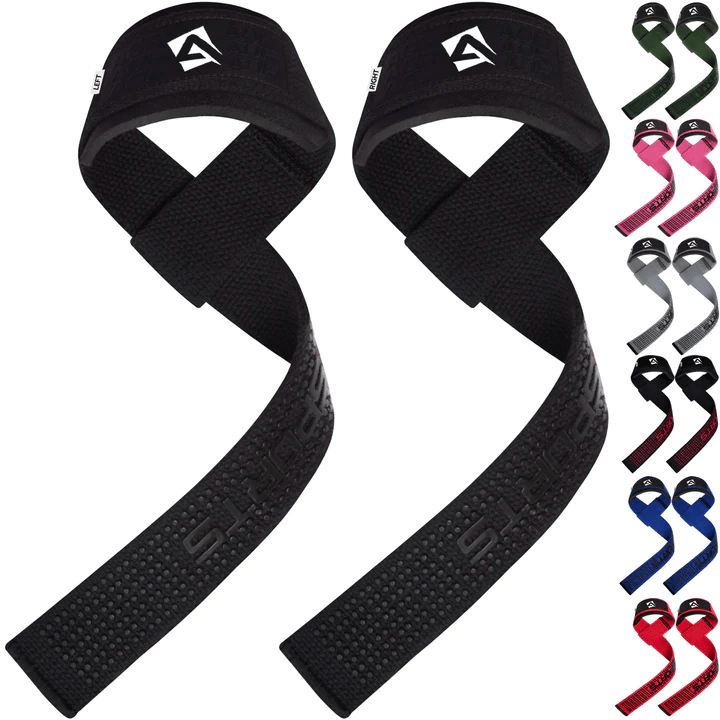
Pros:
Grip Support: Aid in maintaining a strong grip during lifts.
Fatigue Reduction: Allow for muscle fatigue without grip failure.
Cons:
Dependency: Prolonged use may reduce natural grip strength development.
Best Time to Wear Wrist Straps:
Fatigue-Prone Lifts: Ideal for exercises where grip fatigue is a limiting factor, such as heavy deadlifts.
Types of Wrist Straps for Deadlifting
Padded Wrist Straps: Good for Beginners
Cotton Wrist Straps are Simple and cost-effective options. They provide a basic level of grip support.
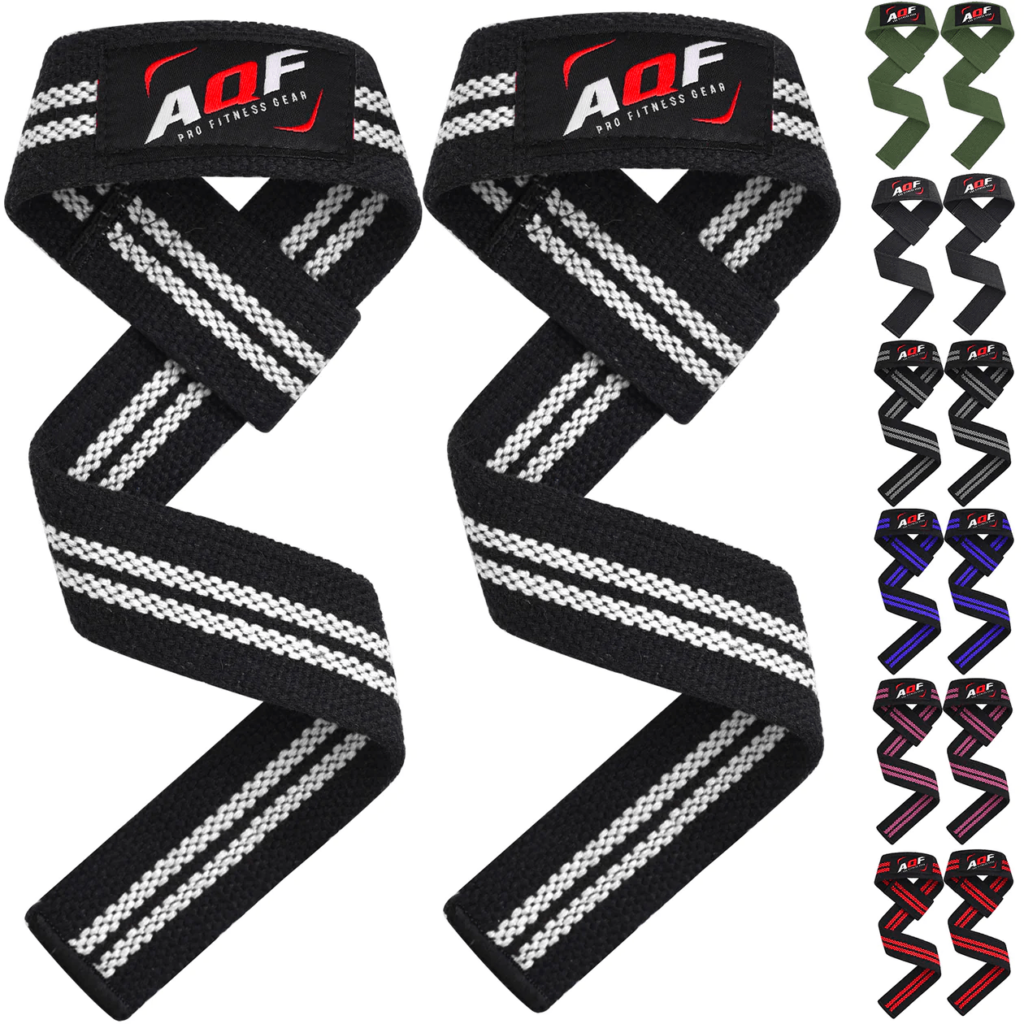
Nylon straps are suitable for individuals engaged in a variety of lifting exercises who desire a more resilient material than cotton.
Padded Gel wrist straps provide extra level of compression and wrist support during intense training sessions.

Leather Wrist Straps: Ideal for Pros
Experienced lifters who value durability and longevity. Leather straps are ideal for those who are willing to break them in for a more comfortable fit over time.

Figure 8 Straps: Quick and Secure Bar Grip
Figure 8 straps are convenient for those who want to rapidly adjust straps between sets.
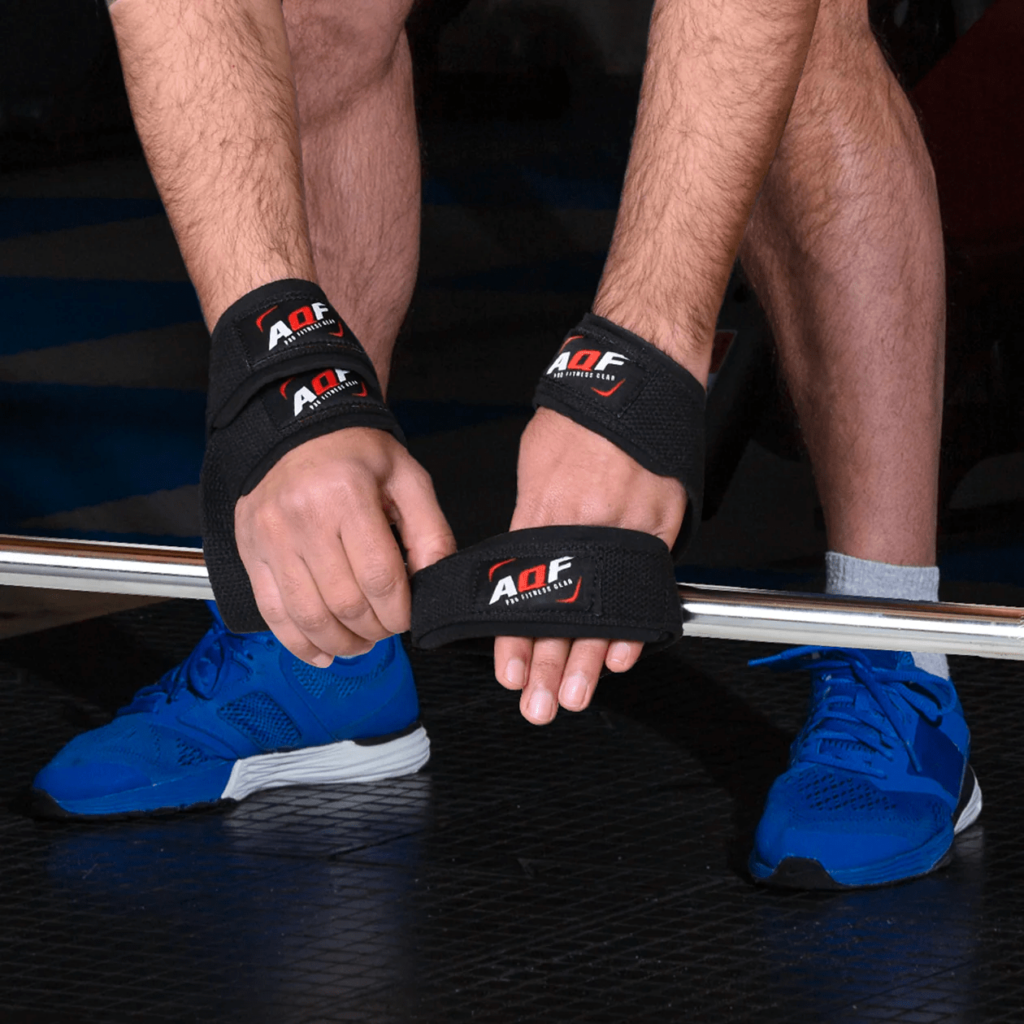
Hook Straps: Suitable for Limited Grip Strength
Hook straps are convenient for those who struggle with maintaining a strong grip on the bar.
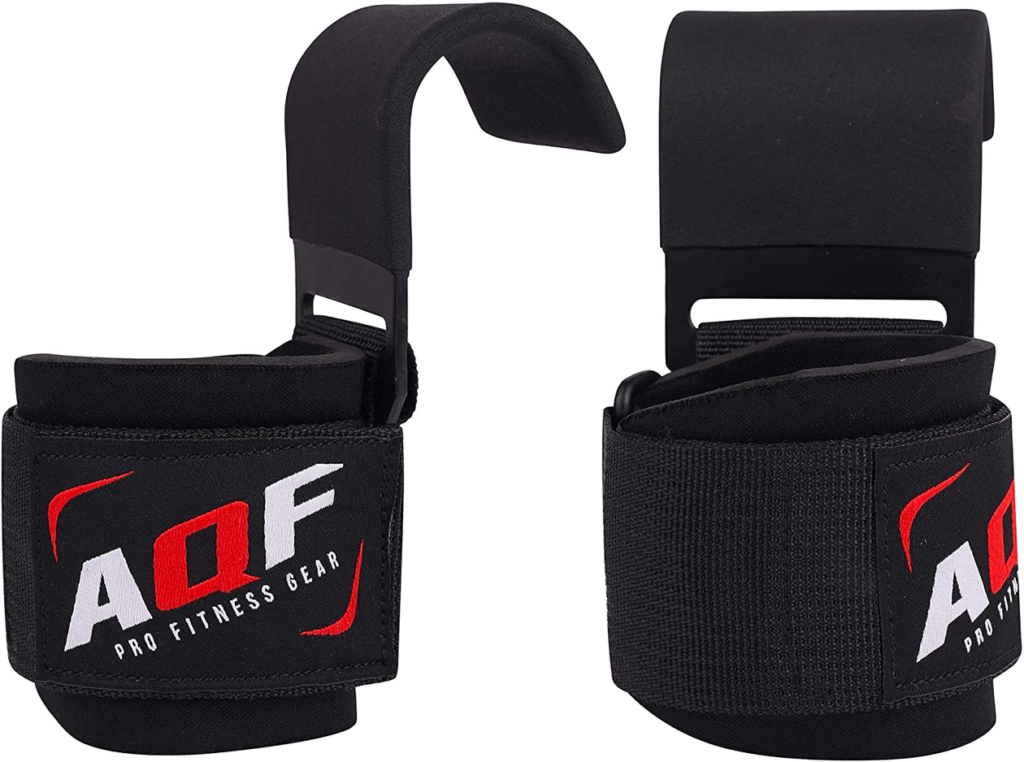
The Bottomline
Wrist straps for deadlifting are beneficial. They provide added support to the wrists and grip, helping to prevent fatigue and potential injuries, especially when lifting heavy weights. Deadlift wrist straps are commonly used when the grip strength becomes a limiting factor in deadlifting performance. Wrist straps are very useful during high-repetition sets or near-maximum lifts.
Explore More Topics
- 13 Mini Resistance Bands Exercises for Beginners
- Wrist Straps vs Wrist Wraps – Everything There Is to Know!
- Difference Between Training Gloves & Sparring Gloves
References:
[1] Do changes in hand grip strength correlate with shoulder rotator cuff function?
[2] Journal of Science and Medicine in Sport – A Cross-Sectional Examination of Wrist Wrap Use






